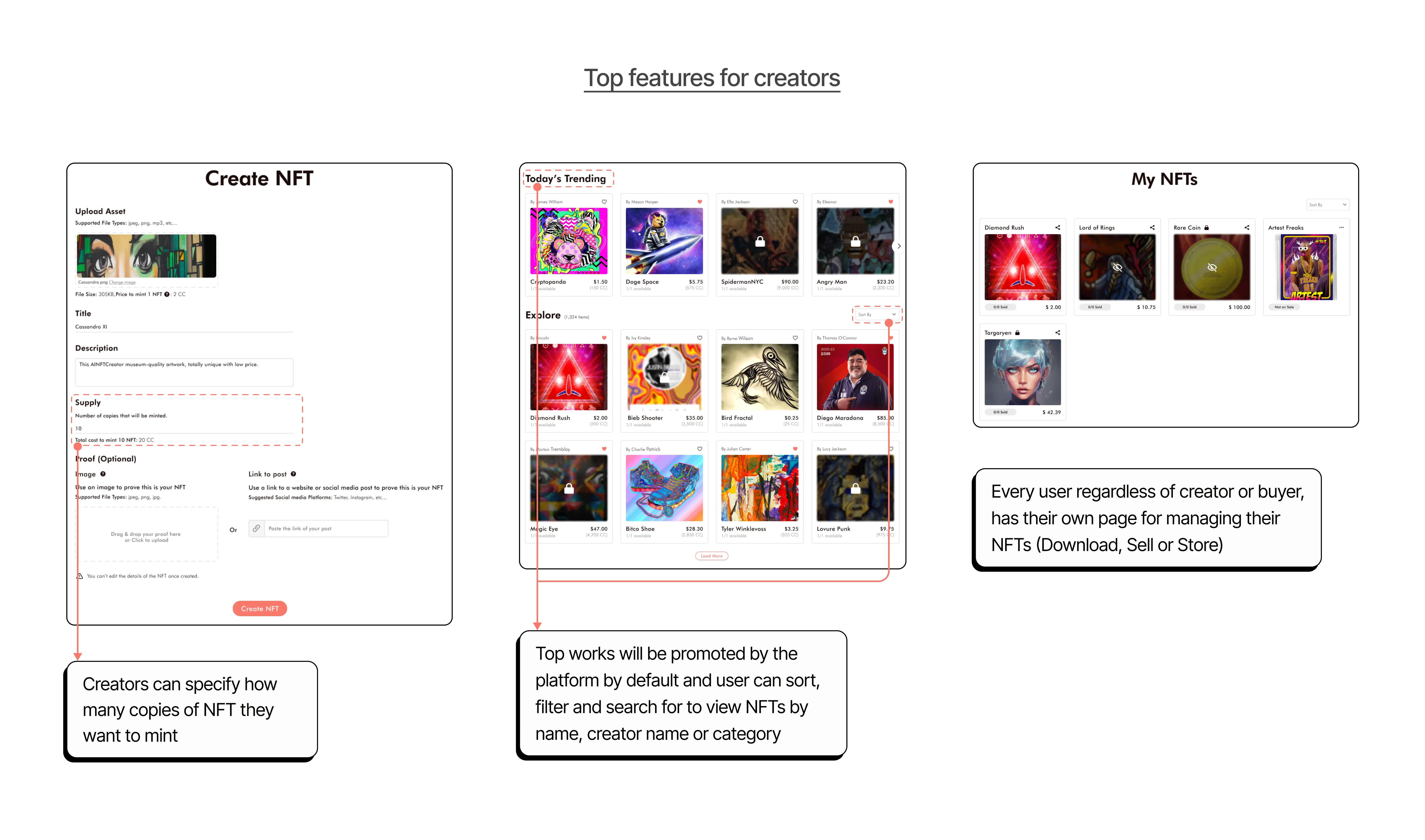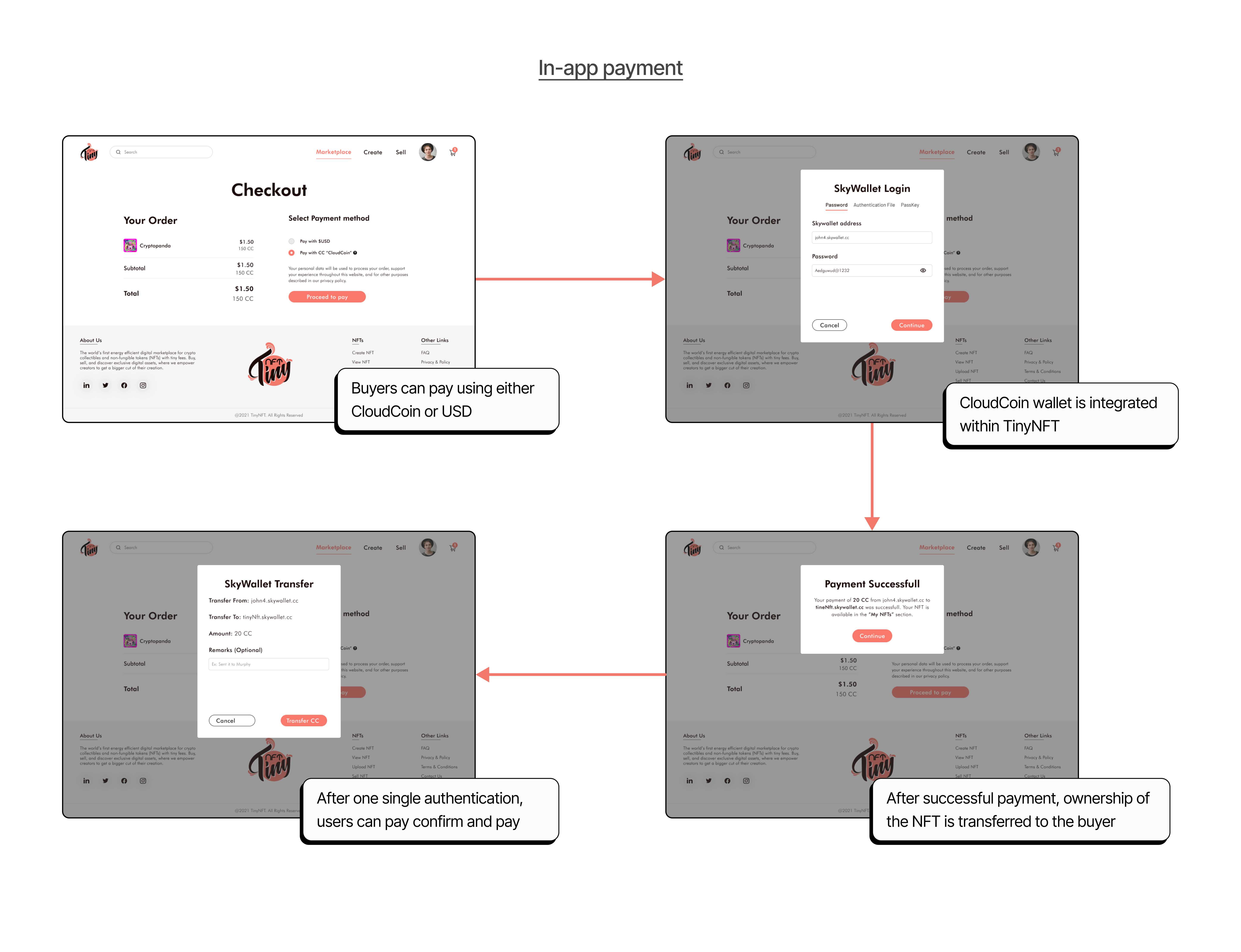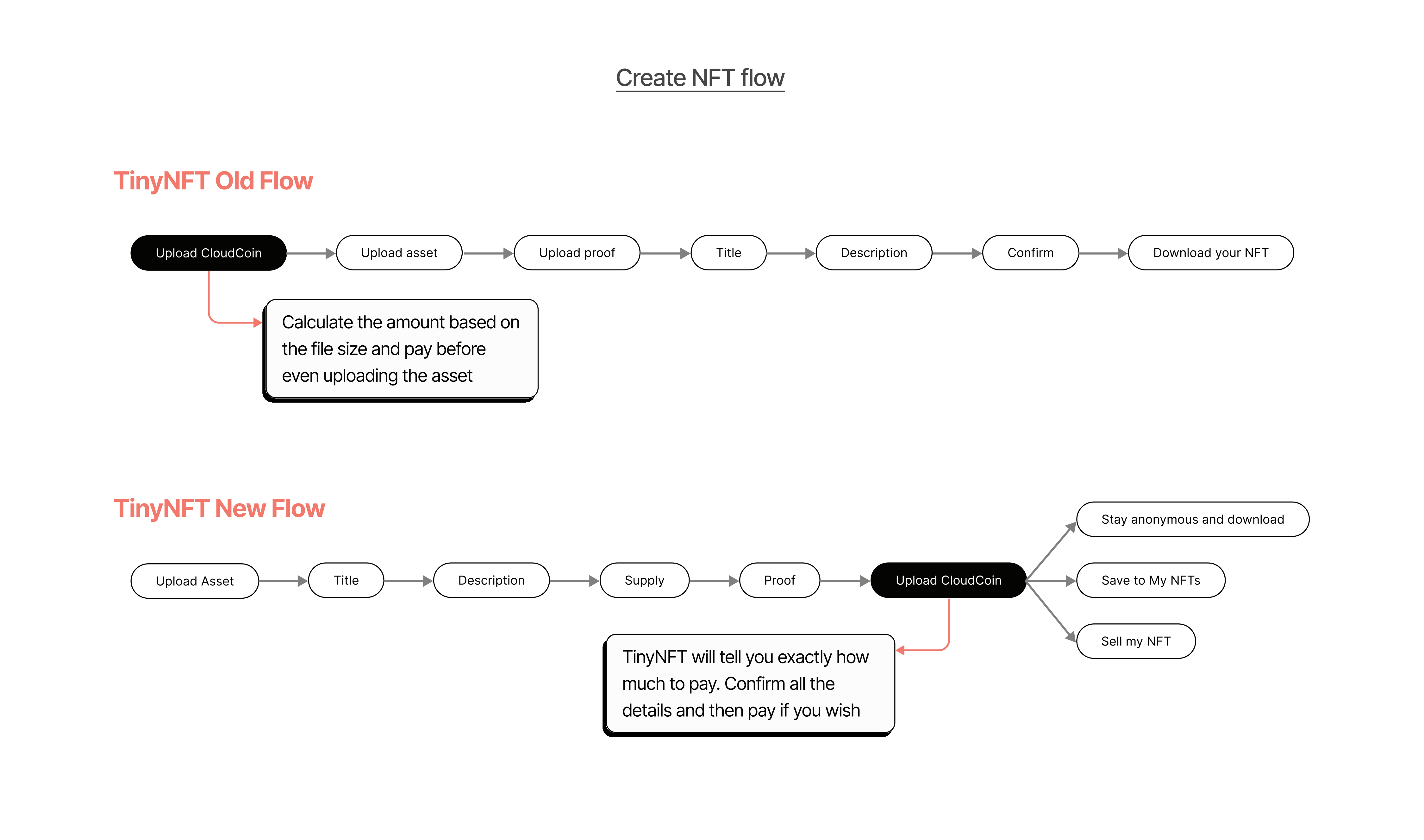Redesigning an NFT Marketplace for Trust & Simplicity


TinyNFT had breakthrough blockchain tech but was losing users due to confusing flows and trust barriers. I led the redesign of its marketplace experience, simplifying NFT creation and payment processes. The result: reduced drop-offs, better support for creators and a foundation for long-term adoption in a competitive NFT market.
Challenge - TinyNFT set out to compete with NFT giants by leveraging its own cryptocurrency, CloudCoin and unique system architecture. The tech was powerful, but platform analytics revealed a conversion rate below 20%. Despite its potential, TinyNFT struggled with engagement and retention.
To succeed, we needed to bridge the gap between TinyNFT’s innovation and real user trust.
I began with a heuristic evaluation and comparative analysis against platforms like OpenSea. Early testing of low-fi wireframes with both seasoned and first-time users revealed friction in core flows.

Through usability testing and user interviews, I uncovered three critical problems:
Creators felt unsupported and undervalued.
➡️ No tools for self-promotion or managing multiple NFTs.
➡️ No option to mint copies to maximize sales.
➡️ Missing central hub for managing listings.
High drop-off rates at every payment stage.
➡️ Users had to leave TinyNFT to buy CloudCoin on third-party sites.
➡️ Multiple authentication steps disrupted the flow.
First-time creators didn’t trust the system and abandoned the process.
➡️ Payment was required upfront before uploading assets.
➡️ Users had to calculate file-based costs themselves.
IThrough rapid wireframing and testing, I identified friction points and restructured user journeys to align with mental models familiar to creators and buyers.

After few iterations of testing and refining low-fidelity wireframes, we reached a set of solutions that effectively address the major friction points identified, along with other usability issues uncovered through our research.
I redesigned the creator experience to build trust and provide flexibility:
This positioned TinyNFT as a creator-friendly platform, a critical differentiator.

To remove friction, I integrated the CloudCoin Wallet directly inside TinyNFT:
This eliminated trust gaps and made transactions feel reliable.

I restructured the flow:
This gave first-time creators confidence and aligned TinyNFT with mental models from other marketplaces.

In addition to the TinyNFT platform, the client requested a temporary landing page to attract NFT creators. This page facilitates the initial phase of the product launch by showcasing populated NFTs. Analysis of competitors' landing pages and their marketing campaigns informed the development of our unique selling proposition and other compelling benefits for creators. Following thorough testing, we refined the landing page to seamlessly convey the essence of TinyNFT, making it intuitive for visitors to navigate towards the platform and explore it firsthand.
Higher than goal, mainly due to low CloudCoin trust, expected to improve with ecosystem maturity.
Achieved goal, validating simplified buying & search improvements.
Clearer messaging attracted interest from new creators, validated through feedback sessions.
This project proved that even the most innovative technology falls short without intuitive, trust-driven experiences. By simplifying flows, streamlining payments and empowering creators, I was able to close the gap between TinyNFT’s potential and its actual user adoption.
Designing for TinyNFT challenged me to look beyond usability into building trust especially in decentralized products where confidence is as critical as functionality. I learned how to balance business constraints, user needs and technical feasibility while still pushing for meaningful improvements. Moving forward, my focus is on refining the payment system to reduce friction even further, designing trust-building mechanisms for CloudCoin and aligning the platform and landing page visually to create a more consistent, credible brand experience.